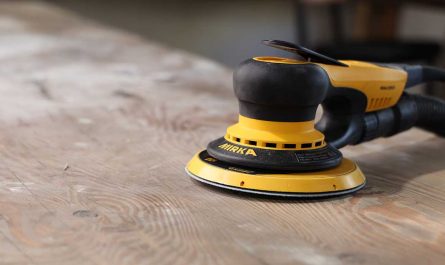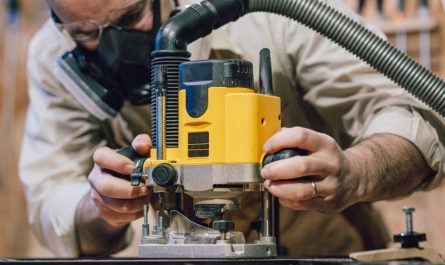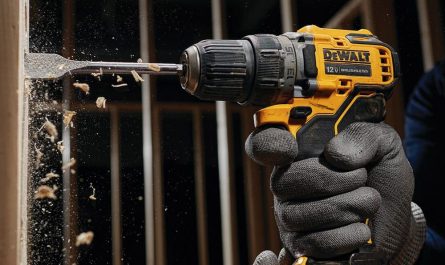In the dynamic world of carpentry and construction, raw power and controlled force are often just as important as precision. Enter the demolition hammer—a tool built to handle the toughest tasks in renovation, remodeling, and heavy-duty carpentry. Whether you’re breaking through concrete floors or chipping away stubborn tile, the demolition hammer replaces the sledgehammer and chisel with unmatched efficiency and impact.
This article explores the evolution, types, technical specifications, and practical uses of demolition hammers in construction and woodworking. From tearing down walls to prepping surfaces for rebuilding, learning how to use a demolition hammer correctly can save time, labor, and back strain.
History and Evolution of the Demolition Hammer
The demolition hammer evolved from pneumatic jackhammers used in industrial demolition and roadwork. Originally large and cumbersome, these tools have been miniaturized over the years for use in residential and commercial carpentry projects, allowing tradespeople to apply concentrated, percussive force with better control and maneuverability.
Modern demolition hammers come in electric, battery-powered, and pneumatic versions. With improved ergonomics, vibration reduction, and adjustable impact strength, they’ve become more user-friendly without sacrificing the raw power needed for breaking up tough materials. Today, they’re a common tool on renovation sites where materials must be removed quickly and cleanly before construction begins.
Types of Demolition Hammers and Their Applications
1. Electric Demolition Hammer

Description and Use:
Electric demolition hammers are the most common variety found on job sites. They plug into standard outlets and use an internal piston mechanism to deliver rapid, high-impact blows to materials like concrete, brick, stone, or tile. These hammers are ideal for removing flooring, breaking through foundations, or chiseling away mortar and plaster.
Their continuous power supply makes them perfect for long-duration use, especially during extensive demolition phases. Equipped with SDS-Max or hex shanks, electric demolition hammers accommodate a wide range of chisel attachments for different tasks—pointed bits for breaking, flat chisels for lifting tiles, and wide chisels for scraping.
Electric models are frequently used in remodeling, such as removing old bathroom tiles, demolishing brick walls, or prepping concrete slabs for reconstruction. Many offer features like anti-vibration handles and adjustable speed/impact controls, allowing for greater comfort and flexibility during use.
Technical Characteristics:
- Impact energy: 8–30 joules
- Blow rate: 1,300–3,500 BPM (blows per minute)
- Compatible with SDS-Max or Hex shank bits
- Includes vibration control and ergonomic grips
Price Range:
€150 – €600
2. Cordless Demolition Hammer

Description and Use:
Cordless demolition hammers provide the freedom to work in remote areas or tight spots where cords would get in the way. These battery-powered tools run on high-capacity lithium-ion systems—typically 18V to 36V—delivering surprising power with enhanced mobility. While they may not match the raw output of heavy corded models, they’re perfect for light to medium-duty demolition tasks.
Cordless models are favored for on-the-go jobs like removing tile backsplashes, chipping out door thresholds, or breaking up thin slabs or blockwork. The absence of a power cable means users can maneuver around job sites more safely and efficiently, especially in elevated or confined areas.
With brushless motors, rapid recharge batteries, and compact designs, cordless demolition hammers are becoming increasingly viable alternatives for both pros and DIYers. For those working on renovation projects or quick tear-outs where flexibility is key, cordless models offer an excellent balance between power and convenience.
Technical Characteristics:
- 18V–36V lithium-ion battery
- Brushless motor for higher efficiency
- Ideal for 2–10 joules of impact energy
- Lightweight for above-head and wall work
Price Range
€200 – €500
3. Heavy-Duty Demolition Hammer

Description and Use:
Heavy-duty demolition hammers are designed for professional contractors and construction crews who need to break through the toughest materials. These large, often industrial-grade tools deliver extreme impact force, perfect for breaking thick concrete slabs, tearing out structural elements, or performing road and foundation work.
Often used in major renovations, commercial construction, or concrete cutting, these hammers can be too powerful for precision work but excel at high-volume demolition. Many are equipped with cooling systems and dust protection for long, intensive sessions, and typically require two hands to operate safely.
Though heavier and less portable, their sheer power drastically cuts down on labor time when dealing with hard surfaces. If you’re tackling a full bathroom remodel, tearing out a slab for a new staircase, or preparing a site for excavation, a heavy-duty demolition hammer is the tool to trust.
Technical Characteristics:
- 25–60 joules of impact energy
- Blow rates of 1,000–2,000 BPM
- Designed for prolonged, high-force tasks
- Weighs 10–30 kg, often with carry case or wheels
Price Range:
€400 – €1,000+
Common Applications in Carpentry and Construction
- Tile & Flooring Removal: Demolition hammers lift and break tile, laminate, or stone flooring efficiently.
- Concrete Demolition: Ideal for breaking patios, foundations, slabs, or retaining walls.
- Masonry Work: Quickly removes bricks, mortar, or blocks in remodels or window/door expansions.
- Surface Prep: Prepares concrete for refinishing by chipping away uneven or damaged areas.
- Wall Removal: Removes interior or exterior walls during renovation, especially where rebar or dense material is present.
Conclusion
The demolition hammer has transformed the demolition process by blending raw force with controlled precision. With options ranging from cordless to heavy-duty corded models, carpenters and contractors now have the power to handle even the toughest tear-outs with less strain and more speed.
Choosing the right model based on your project scope—whether it’s a lightweight cordless unit for detail work or a beastly breaker for concrete slabs—ensures maximum efficiency and safety. With the proper technique and protective equipment, a demolition hammer becomes more than just a tool; it’s your powerful partner in reshaping, rebuilding, and refining every project from the ground up.



